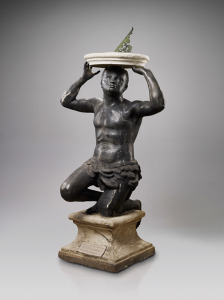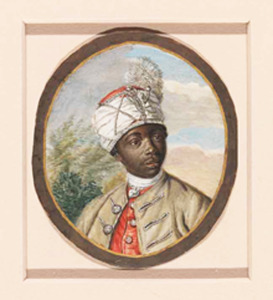A new exhibition at the Yale Center for British Art aims to shed light on the complex relationship between 18th-century British metropolitan culture and the transatlantic slave trade.
“Figure s of Empire: Slavery and Portraiture in Eighteenth-Century Atlantic Britain,” which opened last Thursday, brings together more than 60 paintings, sculptures, prints, drawings and decorative objects, the majority of which are drawn from the Center’s own collection. Curated by Cyra Levenson, the Center’s associate curator of Education, along with Esther Chadwick and Meredith Gamer, Ph.D. candidates in Yale’s History of Art department, the exhibition hopes to use portraiture as a lens through which to understand how slavery was represented in 18th-century British art.
s of Empire: Slavery and Portraiture in Eighteenth-Century Atlantic Britain,” which opened last Thursday, brings together more than 60 paintings, sculptures, prints, drawings and decorative objects, the majority of which are drawn from the Center’s own collection. Curated by Cyra Levenson, the Center’s associate curator of Education, along with Esther Chadwick and Meredith Gamer, Ph.D. candidates in Yale’s History of Art department, the exhibition hopes to use portraiture as a lens through which to understand how slavery was represented in 18th-century British art.
“[‘Figures of [media-credit id=11515 align=”alignnone” width=”273″]Empire’] is a way to demonstrate and explain the ways in which British metropolitan culture and the transatlantic slave trade must be understood together,” Chadwick said. “In this exhibition, we’re presenting works in which this ‘coming together’ is actually visualized — where slavery is aestheticized and woven into the fabric of British culture.”
Occupying the center of the exhibit’s first room is a sculpture titled “Garden Statue with Sundial,” which has been attributed to Flemish artist John Nost. The Sundial once stood on Elihu Yale’s estate in Wales and then in the courtyard of Jonathan Edwards College from the 1920s to 1970s. Chadwick explained that the figure holding up the dial is intended as a kind of amalgamation of the allegorical figures of Africa and America that frequently appeared on British maps. She added that this sort of imagery — popular in garden statues throughout 18-century Britain — could be viewed as emblematic of the nation’s intensified engagement in the transatlantic slave trade during the period. Gamer noted that the sundial is important in that it provides visitors with an idea of the kinds of images that were in circulation during the early 1700s, adding that she hopes it will spark conversations about slavery in the context of Yale’s history.
 “A lot of times, I think our collection can seem quite distant and, at worst, irrelevant to people, to visitors who think, ‘Why should 18th-century portraits from England be something [I] could connect to?’” Levenson said. “We tried very hard to make [the exhibition] not just a history show or a historical analysis, but an active experience … something they can leave [the YCBA] and still talk and think about.”
“A lot of times, I think our collection can seem quite distant and, at worst, irrelevant to people, to visitors who think, ‘Why should 18th-century portraits from England be something [I] could connect to?’” Levenson said. “We tried very hard to make [the exhibition] not just a history show or a historical analysis, but an active experience … something they can leave [the YCBA] and still talk and think about.”
On the walls of the exhibit’s central bay hang several examples of “conversation pieces” — a genre of group portraiture popular in 18th-century Britain that aims to display the politeness, refinement and wealth of a family. Among the paintings is William Hogarth’s “Portrait of a Family,” a work that dates to 1735. The painting was cropped down at some point during its history, Gamer noted, adding that it is unclear whether the cropping was done to fit the work into a smaller frame or to erase the figure of an enslaved servant at the image’s left.
Gamer described the cropping down of the picture as “a metaphor for the way the history of slavery, until quite recently, was written out of the history of British metropolitan culture and visual art.” She added, “One of the things the exhibition is trying to do is to put that history back in, in pictures where it is either indirectly or explicitly present.”
Other key works include Sir Joshua Reynolds’ oil-on-canvas “Charles Stanhope, third Earl of Harrington, and a Servant” from 1782, which alludes to the complex nature of relationships underlying portraiture during the period. Another highlighted work is Thomas Gainsborough’s 1768 portrait, “Ignatius Sancho,” the exhibition’s only major loan from outside of Yale, which shows the sitter in an independent, single-figure oil portrait.







